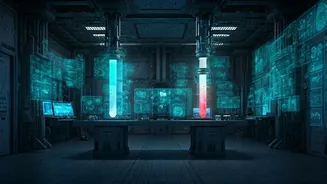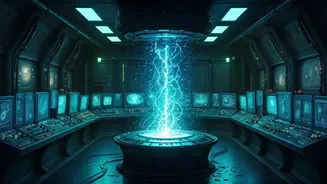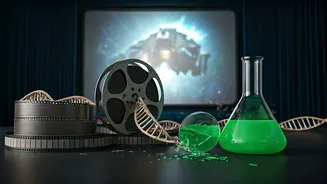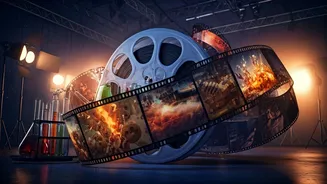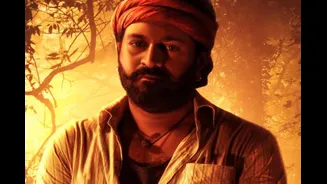Time Travel Shenanigans
Time travel, a favorite trope in science fiction, is often riddled with inaccuracies. 'Back to the Future,' despite its charm, presents several scientific
fallacies. The most notable is the ease with which Marty McFly alters the timeline. While the idea of changing the past and affecting the future is exciting, the series glosses over the complexities of causality and the potential for paradoxical situations. Then comes the paradox of changing one's own past. The repercussions of these actions, especially those relating to one's own existence, are often simplified for the sake of storytelling. Moreover, the depiction of time travel technology, like the DeLorean, is highly imaginative, relying more on cinematic flair than on established scientific principles. These inaccuracies, however, have contributed to the series' enduring appeal, inspiring viewers to question time itself, even if it's not grounded in real science.
Explosions in Space
The portrayal of explosions in space is another common offender. In the vacuum of space, there is no oxygen to support combustion, which is essential for explosions. Therefore, dramatic explosions with fireballs as often seen in movies like 'Star Wars' are scientifically implausible. Sound also cannot travel in space due to the lack of a medium for the sound waves to propagate, yet explosions are commonly accompanied by loud sounds. However, filmmakers prioritize visual spectacle, creating awe-inspiring effects that capture the viewers' imagination. The exaggeration of these scientific inaccuracies, like the loud booms and visual flares, is often a conscious choice. These creative liberties enhance the excitement, making the films more engaging. While these cinematic portrayals are not scientifically accurate, they contribute significantly to the storytelling and the overall experience of space-themed movies.
Instant Genetic Engineering
Genetic engineering is a complex field, but it is frequently simplified in films. The 'Jurassic Park' franchise, for example, showcases instantaneous genetic modification and the rapid creation of dinosaurs. The process of extracting DNA, filling in the gaps, and then growing a complex organism takes a significant amount of time and resources. The film’s narrative compresses these intricate steps, creating a more dramatic and immediate outcome. Furthermore, the film oversimplifies the understanding of prehistoric DNA and the challenges associated with its extraction and reconstruction. While entertaining, these cinematic choices allow for a compelling plot, allowing the filmmakers to create thrilling scenes. In reality, the ability to bring extinct creatures to life would be a monumental undertaking, involving years of research. The simplification highlights the difference between scientific reality and storytelling needs.
The Speed of Light
Movies often bend the rules of physics, especially those regarding the speed of light. Traveling faster than light, a common theme in space operas, is a violation of Einstein’s theory of special relativity. The theory states that the speed of light in a vacuum is a constant and that nothing with mass can reach or exceed this speed. In 'Star Trek' and similar science fiction, spaceships frequently move at warp speed, bypassing this fundamental limitation. Similarly, instantaneous communication across vast distances, as seen in many sci-fi narratives, would be impossible without violating the speed limit. The portrayal of faster-than-light travel and communication allows for faster exploration and immediate connections across the galaxy, a useful storytelling tool. However, the necessity of these inaccuracies in storytelling is undeniable, allowing filmmakers to weave complex narratives that stretch the boundaries of space and time.
Hollywood's Artistic License
Overall, the consistent use of scientific inaccuracies in movies and TV shows reveals a broader trend: Hollywood’s penchant for artistic license. To entertain audiences, storytellers often prioritize dramatic effect and emotional resonance over strict scientific accuracy. While some viewers may question these decisions, filmmakers are often more focused on crafting compelling narratives that engage the audience. By embracing these creative liberties, the industry generates exciting and memorable experiences. The acceptance of these creative liberties enhances the experience, making the stories more enjoyable, and showcasing the flexibility of the cinematic arts. These inaccuracies, whether related to time travel, space, or genetic engineering, serve as examples of how filmmakers use scientific ideas to tell exciting stories, even if they bend scientific rules for dramatic impact.


